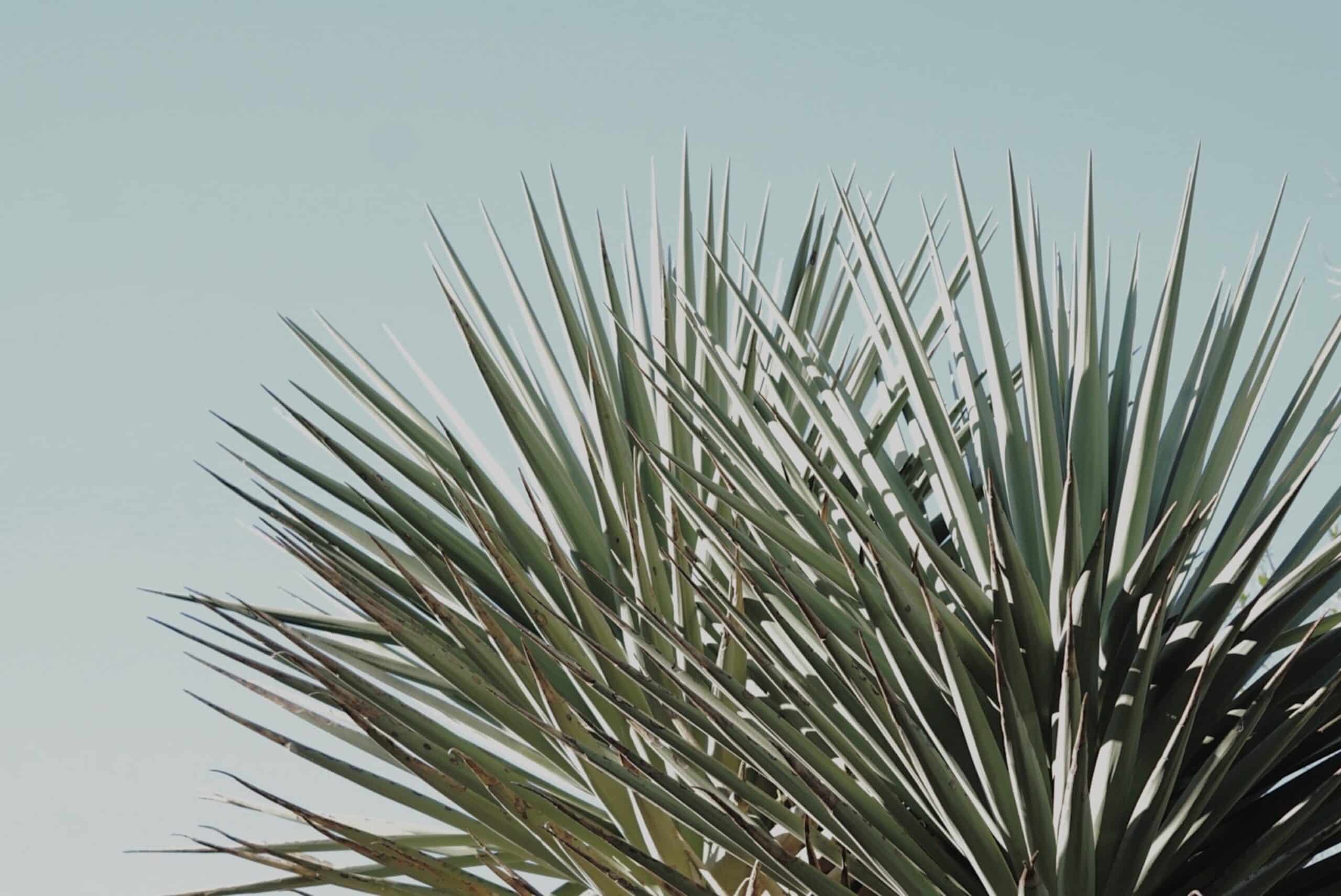Aesthetically pleasing plants have become increasingly popular for home decor in recent years, with an estimated 81% of households in America now containing at least one houseplant. These plants not only provide a burst of life and color to an interior space, but can also bring about benefits such as improved air quality and increased feelings of well-being. With so many options available, it can be difficult to decide which plants are best suited to your home, so here is a list of the top 10 most beautiful indoor houseplants that you should consider adding to your living space.
Bringing the outdoors inside can be a great way to make any room more inviting and brighten up the atmosphere. Not only do houseplants look beautiful on shelves or countertops, they also help to purify the air and can improve overall mental health by reducing stress levels. Plants such as peace lilies, fiddle leaf figs and monstera deliciosa are perfect for adding a touch of sophistication to any interior design scheme.
Succulents are another popular choice for those looking for easy-to-care-for plants that don’t require too much maintenance. These hardy little beauties come in all shapes and sizes and will thrive with minimal watering, making them perfect for busy households or people who tend to forget about their plants from time to time. Other options such as snake plants or pothos are great additions if you’re looking for something that is low maintenance yet still adds a pop of color to your space.
Finally, if you’re looking for something really special then why not opt for an exotic plant such as the Chinese money plant or a tropical bird of paradise? Both these varieties make stunning centerpieces that will bring any room alive with their bold colors and unique shapes. Whatever type of aesthetic houseplant you choose, there is sure to be something out there that fits perfectly with your style and requirements!
What Makes An Aesthetic Plant?
Time stands still when we’re in the presence of an aesthetic plant. Whether it’s big and bold or dainty and delicate, these plants can inject life into any space while invigorating the senses. But what makes an aesthetic plant?
Well, aesthetics are subjective and depend on personal preferences, but there are some common traits among plants that people find aesthetically pleasing. These include unique shapes, interesting colors, textures, and patterns. Additionally, some plants have a calming effect which adds to their beauty. For instance, trailing plants like ivy provide a peaceful atmosphere that can be both visually appealing and calming for those around them.
The type of container used also plays an important role in creating an aesthetically pleasing display. An attractive pot or planter can help enhance the overall look of the plant. Plus, consider adding decorative accents like stones or pebbles around the base of the pot to really make it stand out!
Moving along to Snake Plant – also known as Mother-in-Law’s Tongue – this is one of the most popular houseplants due to its striking shape and hardiness. It’s great for beginner gardeners because it requires very little maintenance and is tolerant of low light conditions. With its tall upright leaves that come in a variety of colors from green to yellow-green striped varieties, this plant definitely stands out from other houseplants!
Snake Plant
The Snake Plant is a great choice for adding aesthetic appeal to any home. With its slender, upright leaves, the plant makes a striking statement in any room. Not only does it look beautiful, but it also requires minimal care and attention. Here are four reasons why the Snake Plant is an ideal indoor houseplant:
It’s easy to maintain – You won’t need to worry about watering or fertilizing your Snake Plant as often as other plants – this plant can thrive on neglect!
It’s air-purifying – The Snake Plant can help purify the air by removing toxins like formaldehyde, benzene and nitrogen dioxide from your home.
It’s low light tolerant – The Snake Plant can tolerate low light areas, making it perfect for darker rooms or corners of the house where other plants may not survive.
It’s versatile – With its bold green stripes and unique shape, the Snake Plant is sure to make a statement wherever you place it in your home!
Overall, the Snake Plant is a great option for adding aesthetic beauty and functionality to any room of your home without a lot of fuss or maintenance required. Plus, its air-purifying qualities make it even more attractive! Next up we’ll look at another amazing indoor houseplant – Pothos!
Pothos
Our journey to find the best aesthetic plants continues, and today we have reached a crossroads – do we take the path of the Pothos? This resilient houseplant is like the explorer of old, bravely pushing forward into unknown territory. With its long tendrils that reach out in all directions, it can bring life to any room and will thrive even in low-light conditions.
The Pothos is an excellent choice if you want your houseplant to be beautiful but don’t want to spend much time tending it. It’s undemanding nature means that it needs only occasional watering and no pruning or fertilizing; simply sit back and admire the lush foliage. Furthermore, this plant is known for being one of the best air purifiers – so not only will it look great, but it will also contribute to a healthier home environment.
So why choose a Pothos as part of your interior decor? Not only does it look stunning with its vibrant leaves, but its hardy nature makes it ideal for those who are new to houseplants or have limited time for upkeep. In addition, its air-purifying abilities make it an attractive choice for anyone looking for a more healthful home environment. Moving on from here, our next stop is Chinese Evergreen – let us continue our quest!
Chinese Evergreen
Irony can be a powerful tool when it comes to emphasizing the beauty of certain plants, and the Chinese Evergreen is no exception. However, ironically enough, this plant is anything but evergreen! In fact, it’s an incredibly hardy houseplant that can survive in conditions that may be unsuitable for most other plants.
The Chinese Evergreen has eye-catching leaves with beautiful streaks and patterns of silver, gray, and green. Not only that, but they are also easy to care for and will thrive in low light environments making them ideal for anyone looking to add some color and life to their home without much effort.
Though its lovely leaves may be alluring, it’s worth noting that the Chinese Evergreen is poisonous if ingested so care should be taken when placing it around pets or small children. But if you’re looking for a low-maintenance plant with aesthetic appeal and plenty of charm then the Chinese Evergreen is definitely worth considering. With a bit of love and attention this plant can bring life to any room!
Dracaena
The fifth aesthetic plant to consider is the dracaena. This low-maintenance, easy-to-care-for houseplant is a favorite among interior designers looking for a way to add texture and color to any space. It comes in a wide variety of shapes, sizes, and colors, making it perfect for just about any room in the house. Plus, its long, slender leaves make it ideal for narrow spaces or corners.
The best part about this plant is that it’s one of the few plants that can survive with minimal light and water. That means you won’t have to worry about overwatering or underwatered soil. And if you’re looking for something that’s as functional as it is aesthetically pleasing, look no further than the Dracaena. It’s been known to help clean the air by absorbing toxins like benzene and formaldehyde found in household items such as paint, furniture, and even carpets.
In addition to its air-cleaning abilities, Dracaena is also known to be relatively pest resistant. That makes it perfect for those who want an eye-catching plant without having to worry about pesky bugs or diseases attacking their beloved foliage. With all these benefits and more, it’s no wonder why Dracaena has become one of the most popular aesthetic plants around today! Transitioning seamlessly into the next entry on our list…the fiddle leaf fig tree is another great option when looking for an aesthetically pleasing indoor houseplant.
Fiddle Leaf Fig
A classic, the fiddle leaf fig is one of the most popular aesthetic plants. Its large, glossy leaves give off an air of sophistication and elegance. It’s no wonder why it’s often seen in home decor magazines and influencer accounts! With its distinctive shape, this plant will be sure to add a touch of class to any room.
Here are some tips for caring for your fiddle leaf fig:
- Water: Make sure to water your plant regularly, but do not over-water it. The soil should be damp but not soggy.
- Light: Place your plant near a window with plenty of indirect sunlight.
- Temperature: Keep your fiddle leaf fig in a temperature range between 60-75F.
The fiddle leaf fig is a great choice if you’re looking for an aesthetic houseplant that will bring beauty and class to any space. With its glossy leaves and distinctive shape, this plant can really elevate the look of any room! Plus, with proper care, you can keep it thriving for years to come. Now let’s take a look at another stylish houseplant – the cast iron plant!
Cast Iron Plant
The anticipation is growing as we move on to the seventh best aesthetic plant. It is a unique and interesting choice that will certainly turn heads – the Cast Iron Plant. This robust houseplant has gotten its name because it can survive almost any condition, much like a cast iron skillet.
This low-maintenance plant is great for homes with busy schedules who don’t have time to properly care for other plants. The Cast Iron Plant loves indirect sunlight and needs to be watered once or twice a month, depending on the season. In addition, its evergreen foliage adds texture and interest to any room in your home.
When purchasing this plant, keep in mind that you may need to repot it every few years as it grows quickly and can become top heavy in smaller pots. All together, its resilience and beauty make it one of the best plants for aesthetically pleasing indoor decor. Now let’s move on to discuss another lovely houseplant – the ZZ Plant!
Zz Plant
The ZZ Plant is an excellent choice for those looking to add a unique aesthetic to their home. This hardy plant is the most popular houseplant in the United States, with over 8 million households having at least one in their home. Not only is it highly popular, but it’s also very low maintenance; it can go weeks without watering and survive in both low and high light environments.
Here are some of the benefits of having a ZZ Plant: • It’s highly tolerant of a range of environmental conditions, making it ideal for beginners who don’t want too much responsibility. • It’s known for its air purifying capabilities, as well as its ability to reduce stress levels with its calming presence. • Its attractive dark green foliage makes it an eye-catching addition to any home.
Ultimately, the ZZ Plant is an excellent choice for anyone looking for a beautiful indoor houseplant that requires minimal upkeep and adds a unique aesthetic to any space. In addition, its air purifying capabilities make it even more desirable for busy people who don’t have time to regularly care for plants. Plus, its low maintenance requirements mean that even those who forget about it from time to time won’t have to worry about killing it! With all these advantages combined, the ZZ Plant is an easy pick when choosing your next houseplant.
Peace Lily
The peace lily, a mysterious and exotic plant that has become the go-to for all hip home decorators. It’s like having your own little piece of the Amazon rainforest in your living room! This mystical beauty is sure to add an air of sophistication and intrigue to any space.
Let’s take a look at what makes the peace lily so special:
• Aesthetics: With its large, magnificent leaves, the peace lily is sure to impress your guests. Its white flowers can be a stunning accent to any room.
• Care: It’s easy to care for, requiring only occasional watering and medium light levels. You don’t have to be an experienced gardener to keep this beauty alive!
• Health benefits: As if its gorgeous looks aren’t enough, it’s also known for improving air quality in your home by removing toxins such as formaldehyde and benzene from the air around it.
The peace lily is a stunning addition to anyone’s home or garden. In addition to its good looks and low maintenance demands, it provides clean air that you can enjoy with every breath. Now onto another amazing houseplant – philodendron!
Philodendron
The tenth best aesthetic plant is the philodendron, an evergreen plant that grows in tropical forests around the world. It’s a stunning addition to any indoor setting and has been found to reduce anxiety by up to 15%, according to research from Harvard University.
Philodendrons are also known for their air-purifying abilities, as they absorb toxins like formaldehyde and benzene from the air around them. They’re also incredibly easy to care for – simply provide bright, indirect light and water when the top inch of soil is dry.
Overall, philodendrons are a great choice for anyone looking for a beautiful houseplant that’s both aesthetically pleasing and good for your mental health. And with relatively low maintenance requirements, it’s no wonder why this tropical beauty is so popular among houseplant enthusiasts. With that said, let’s move on to calatheas!
Calatheas
The calatheas are like delicate dancers on the stage of life, their long leaves swaying gracefully to and everyone’s admiration. Their unique foliage adds a special touch to whatever room they inhabit and they can be a great addition to any home.
Calatheas come in many varieties, from the petite Rattlesnake Calathea with its zebra-stripe leaves, to the larger Velvet Calathea with its deep green leaves. Some even have dramatic purple undersides that will add a touch of mystery to your space. They don’t require much light, so you can place them anywhere for a pop of color and texture. But you do need to give them plenty of humidity; misting regularly should do the trick.
With proper care, these plants will reward you with beautiful blooms during the warmer months, adding even more vibrancy and charm to your space. So why not take a chance on this captivating plant? You won’t regret it! Moving on from there, let’s explore another aesthetically pleasing houseplant: monstera.
Monstera
The Monstera, a tropical beauty often mistaken for a splattering of abstract art, is a delight to behold. Its lush foliage and tropical vibes add an air of exoticism to any room it graces. The plant has the unique ability to transform walls and spaces into something straight out of paradise.
This hardy species is easy to care for and requires minimal attention in order to thrive. With frequent watering and occasional misting, the Monstera will reward its owner with vibrant green leaves that look like they’ve been hand-painted by nature herself. What’s more, the Monstera’s large leaves are beautiful in their own right and can act as a striking focal point in any home or office.
As if its aesthetic wasn’t enough, the Monstera also offers air purifying benefits. This plant helps remove toxins from your home while adding a touch of green and life to every corner it’s placed in. From its stunning visuals to its practicality, it’s no wonder why this humble houseplant has become one of the most sought after plants today. Transcending beyond traditional indoor greenery, the Monstera is sure to bring life and colour into your space for years to come.
Spider Plant
The spider plant may not look like much at first glance, but its impressive ability to purify the air and its beautiful leaves make it a great choice for an indoor houseplant. Its low maintenance needs mean that even those without a green thumb can have success growing it.
Not only is this plant easy to care for, but it’s also quite aesthetically pleasing with its long, slender leaves and white-striped pattern. Plus, these plants are known to flower if they receive enough light!
The spider plant is a great addition to any home looking to beautify their living space while adding some life indoors. And if you’re looking for something special, try adding an extra touch of color with variegated varieties in shades of cream or green. TIP: Place your spider plant in an area with indirect sunlight and water when the soil feels dry—you’ll be rewarded with robust growth!
Bromeliads
Bromeliads are the perfect plants to add a beautiful yet unexpected touch of nature indoors. Think of them as the exotic dancers of the plant world; they bring pizzaz and vibrancy to any home. For example, my friend recently added a vibrant pink bromeliad to her living room; it instantly became the centerpiece and gave her space an instant lift.
These houseplants come in a variety of different shapes, sizes, and colors so you can easily find one that fits your aesthetic. They are also very easy to care for and maintain; simply make sure you’re providing them with bright indirect light and regular waterings. Bromeliads don’t require too much attention, but they do need occasional misting or re-potting from time to time.
Plus, they boast plenty of health benefits like improving air quality by reducing pollutants in the environment! All in all, bromeliads are an excellent choice if you’re looking for something unique and eye-catching to add some life into your home.
Next up are succulents – small but mighty plants that are just as beautiful as bromeliads but require even less maintenance…
Succulents
A succulent is like a living work of art! With their vibrant colors, interesting textures, and distinct shapes, these plants can turn any room into an incredible sight to behold. Even the most inexperienced gardener can enjoy the beauty of these low-maintenance wonders.
Succulents come in all shapes and sizes, providing a wide range of options for any space. Whether you are looking for something small to fit on your windowsill or a larger plant to take center stage in your home, you will be sure to find something that speaks to you. Plus, they come in a variety of colors and varieties; some even have unique patterns and leaf structures.
When taking care of your succulents, it’s important not to overwater them. Succulents are drought tolerant – providing too much water can lead to root rot and other issues. Additionally, make sure you provide them with plenty of sunlight so that they can thrive in your home environment! TIP: While succulents may look delicate and exotic, they are actually quite resilient – making them perfect for both novice and experienced gardeners alike!
Frequently Asked Questions
How Often Should I Water My Aesthetic Plants?
Watering your aesthetic plants is an important step for keeping them looking their best. Depending on the type of plant, the frequency at which you water will vary. To ensure your plants stay healthy and beautiful, it’s important to understand how often they need to be watered.
Generally speaking, most aesthetic plants need to be watered once a week or when the soil has dried out from the last watering. Here are a few tips for determining when and how much water your plants need: • Check the moisture in the soil – insert your finger about an inch into the potting soil and feel if it’s wet or dry. • Invest in a moisture meter – this tool can help you determine how much moisture is in your soil so you know exactly when to water. • Pay attention to temperature – warmer temperatures mean more evaporation, so you may need to water more often during hot summer months.
It’s important to remember not to overwater – too much water can cause root rot and other diseases that can damage or kill your plants. If there is standing water in the pot after watering, try trimming back on the amount of water next time. With proper care, these beautiful houseplants will bring life and vibrancy into any room for years to come!
Do Aesthetic Plants Need Special Care?
Taking care of aesthetic plants can be a tricky business, especially if you’re new to the world of indoor gardening. While these beautiful houseplants are relatively easy to maintain, they do require special attention in order to thrive. So, what do you need to know about caring for your aesthetic plants?
When it comes to watering, it’s important to keep your eye on the soil. Most aesthetic plants prefer moist soil that’s not overly wet or dry. Depending on the plant and its environment, this could mean watering every few days or once a week. Check the top two inches of soil and water when it feels dry. Additionally, make sure that the pot has good drainage so that the excess water can escape.
It’s also essential to give your aesthetic plants access to enough light. Most of these plants need at least four hours of indirect sunlight per day, but some may require more or less depending on their type and location. If you struggle with getting adequate light in your home, consider purchasing some grow lights as an alternative source of light for your plants.
No matter how much effort you put into caring for your aesthetic plants, there will be times when things don’t work out as planned—it happens! As long as you stay aware of their needs and adjust accordingly, though, you can ensure that your indoor garden is both beautiful and healthy.
Can I Grow Aesthetic Plants Outdoors?
According to a survey by the National Gardening Association, 84 percent of Americans have taken up gardening as a hobby in 2020. For those looking for aesthetically pleasing plants for their gardens, there are many options to choose from. But can you grow aesthetic plants outdoors?
The answer is yes! Many aesthetically pleasing plants are well suited for outdoor growth and come in a variety of shapes, colors, and sizes. Larger shrubs and trees such as magnolia and cherry blossom trees provide a beautiful backdrop to any garden while smaller plants like succulents and ferns can be potted or planted into garden beds. There are even flowering annuals that bloom throughout the summer months and add color to the landscape.
When selecting aesthetic plants for your outdoor space, it’s important to consider your local climate. Make sure you choose varieties that will thrive in your area’s temperature range and sunlight exposure levels. Additionally, make sure you check if the plant is hardy enough to withstand extreme weather conditions like heavy snow or harsh winds.
TIP: Before planting aesthetic plants outdoors, make sure you research their growing requirements so you can give them the best chance of success in your garden!
How Often Should I Fertilize Aesthetic Plants?
Fertilizing aesthetic plants is an important part of their upkeep, but many people don’t realize how often they should be fertilized. According to research, one should fertilize indoor plants at least once every other month. That’s a statistic worth knowing if you’re looking to keep your aesthetic plants in peak condition!
When fertilizing aesthetic plants indoors, it’s important to opt for liquid fertilizer over granular or timed-release options. Liquid fertilizer will deliver the nutrients directly to the plant’s roots for quick absorption and maximum effectiveness. You’ll also want to make sure that you use fertilizer that has been specifically designed for potted plants rather than garden soil.
To maintain the beauty of your indoor aesthetic plants, it’s a good idea to get into a regular fertilizing routine. It doesn’t have to be very time consuming – just a few minutes every two months can do wonders! Be sure to read the instructions on your fertilizer bottle carefully so that you apply the right amount and make sure not to over-fertilize as this can damage your plants.
Are Aesthetic Plants Toxic To Pets?
It’s ironic that something so aesthetically pleasing could be so potentially dangerous. Aesthetic plants, while beautiful to look at, may not be the safest choice for a home that has pets. In fact, some of these plants have been known to have toxic effects on animals if ingested.
So, how can you tell which aesthetic plants are toxic? Generally speaking, most flowering plants and succulents can be considered safe for animals. However, there are still a few exceptions to the rule – such as aloe vera, lilies and jade plants – that should be avoided in an environment with pets.
Therefore, before buying aesthetic plants for your home it is important to do your research and make sure they won’t pose a risk to any furry friends you might have. Doing this will ensure everyone in the household is safe, happy and able to enjoy their beautiful surroundings without worry.
Conclusion
Aesthetic plants add a touch of beauty to any home. They can be grown indoors or outdoors, depending on the variety and your climate. With proper care, they can thrive in any environment and provide you with many years of enjoyment. However, there are some considerations you should keep in mind before bringing aesthetic plants into your home.
When it comes to caring for aesthetic plants, it’s important to know how much water and fertilizer they need in order to stay healthy. Some varieties may require more frequent watering than others, so make sure to research the specific needs of the plant that you choose. Additionally, some aesthetic plants may be toxic to pets, so use caution when deciding which ones to bring into your home.
Overall, aesthetic plants are an excellent choice for those looking for a beautiful addition to their homes without too much maintenance or worry about potential toxicity. Whether you’re a beginner or an experienced gardener, these plants will add color and life to any room in your house! So don’t wait – start planting and enjoy the beauty of aesthetic plants today!





























